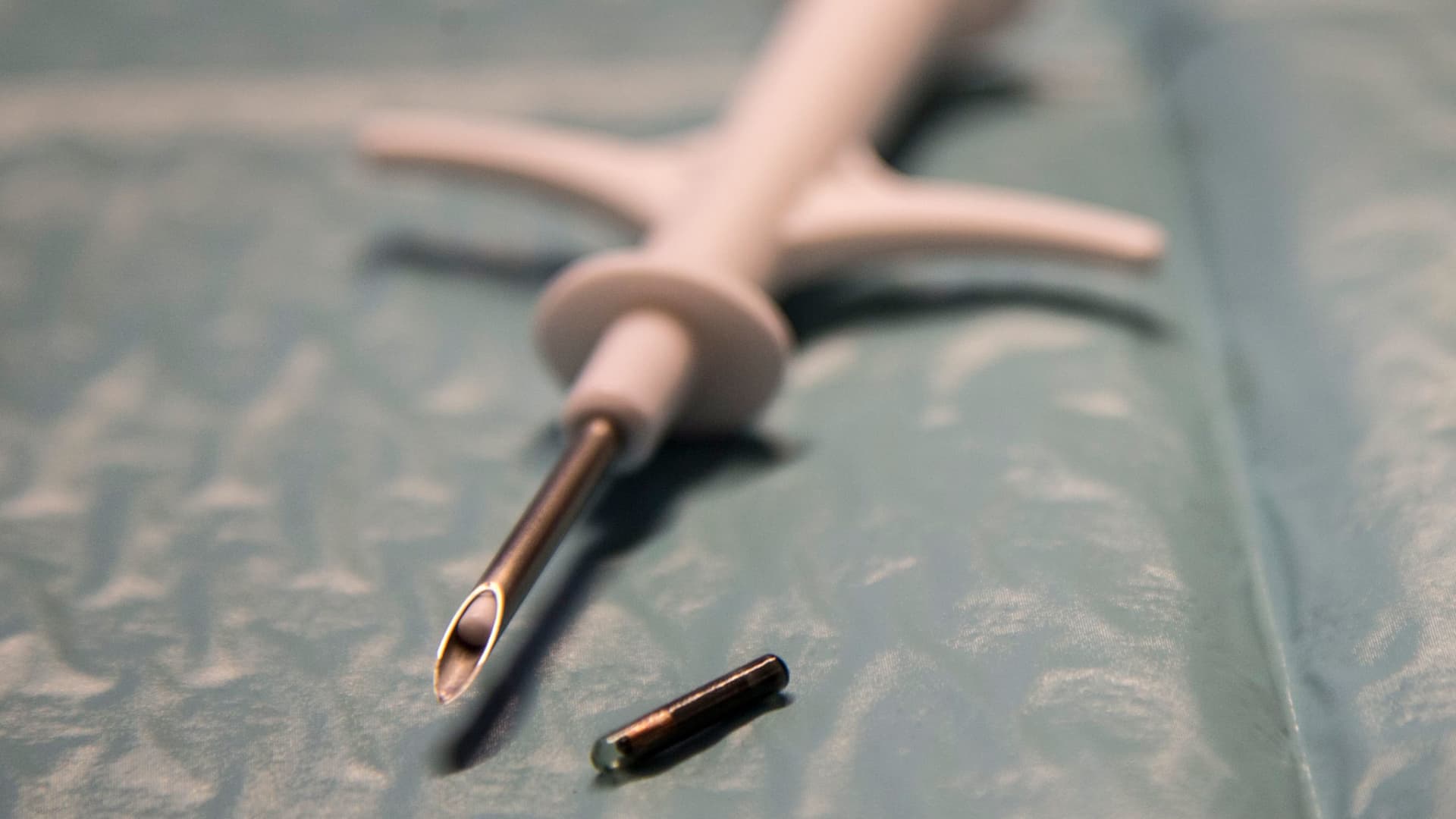
Among the conspiracy theories circulating about the coronavirus pandemic, one claim is that Covid-19 vaccines contain microchips that the government or global elites like Bill Gates would use to track citizens. Despite viral videos claiming a chip in the vaccines makes people's arms magnetic, the conspiracy is false.
"That's just not possible as far as the size that would be required for that microchip," said Dr. Matt Laurens, a pediatric infectious disease specialist at the University of Maryland School of Medicine who also serves as a co-investigator on the phase three trials of the Moderna and Novavax Covid vaccines. "Second, that microchip would have to have an associated power source, and then in addition, that power source would have to transmit a signal through at least an inch of muscle and fat and skin to a remote device, which again, just doesn't make sense."
Still, videos about the theory have racked up millions of views on TikTok. When 1,500 American adults were asked in July whether "the U.S. government is using the Covid-19 vaccine to microchip the population," 5% said it was "definitely true," while another 15% said it was "probably true." Related conspiracies have spread rapidly outside the U.S., too. In the U.K. last year, false claims connecting 5G to Covid led to 133 arson attacks on telecommunications equipment and 300 incidents of staff being physically or verbally abused, according to wireless industry group Mobile UK.

Get Tri-state area news delivered to your inbox.> Sign up for NBC New York's News Headlines newsletter.
"There's lots of stuff that the government can use to track us through our phones, through our credit cards, through other kinds of things.," said Mark Fenster, author of "Conspiracy Theories: Secrecy and Power in American Culture." "The vaccine is the least of your worries."
The Covid vaccines are administered with 25- to 22-gauge needles, which have internal diameters between about 0.26 and 0.41 millimeters. Meanwhile, a chip with 5G functionality is a little smaller than a penny. The smallest radio-frequency identification, or RFID chip, is indeed small enough at 0.125 millimeters. But they only function when attached to a coil antenna that makes the single-chip system about the size of a grain of rice, which would require a syringe about 13 times larger than the one used to inject the vaccines.
"The individual subcomponents in very, very small chips are small enough, but they need to be attached to everything else that makes them work, that makes them into a device and not just a random floating RFID tag," said James Heathers, chief scientific officer at Cipher Skin, which makes wearable biometric tracking devices.
Money Report
Swedish start-up Biohax International has developed RFID chip systems that can be injected under the skin. Founder Jowan Osterlund has four under his own skin and has injected about 6,000 devices in people around the world. It requires a needle far larger than that used for vaccines, and it's still too small to include a power source or tracking capabilities.
"It's two by 12 millimeters. It's the size of a luxurious grain of rice," Osterlund said.

RFID chips have been commercially available since the 1970s. They store a tiny amount of data, which can be read by other devices nearby enabled with near-field communication, or NFC, technology. RFID and NFC allow things like paying without swiping a credit card and keyless access to buildings and public transit. That's also how the Biohax chips are used.
"It's basically getting rid of your wallet and key chain and allowing that microchip to represent whatever cards and keys you have cluttering your pockets," Osterlund said.
The value of the Biohax chips is that each one is unique, but because the Covid vaccines are administered with multidose vials, it's impossible to ensure even a nonspecific chip would end up in each arm.
"That multidose vial is intended for multiple individuals," said Laurens. "So the thought that you could precisely pull up the exact volume that's required for a vaccine for an individual and randomly hope that you would get a very small microchip for each and every single person who's intended to be dosed with that vial is just simply not possible."
Aside from the problems of size and administration, the Covid vaccines are injected at least an inch into dense muscle, far deeper than the Biohax chips that go just under the skin.
"That's why you can push it up and see it," Osterlund said. "I mean, if this was any deeper, you wouldn't be able to communicate it with a phone or even with a door-mounted reader."
Gates got tied to the conspiracy theory in part because of the hundreds of millions of dollars his foundation has given to support vaccine research. Gates addressed the conspiracy in a call with reporters last June.
"There's no chips or anything like that, that have any connection to this thing," Gates said. "I mean, it's almost hard to deny this stuff because it's so stupid or strange that to even repeat, it almost seems to give it credibility."
While companies are making billions by tracking and selling your data, they're not using vaccines to do it.
"We can find out just as much from you just by having your cellphone in your pocket, or just as much from you just going to the store and buying a coffee these days," said Rachel Moran, an online conspiracy researcher at the University of Washington. "So we have lots of different technologies to track people and their data. And hopefully we'll have a more robust legal system so we know those systems better, but we definitely don't need to put a microchip in people's arms."
Watch the video to hear more from doctors and vaccine researchers about where this conspiracy theory came from and why it's not possible.






